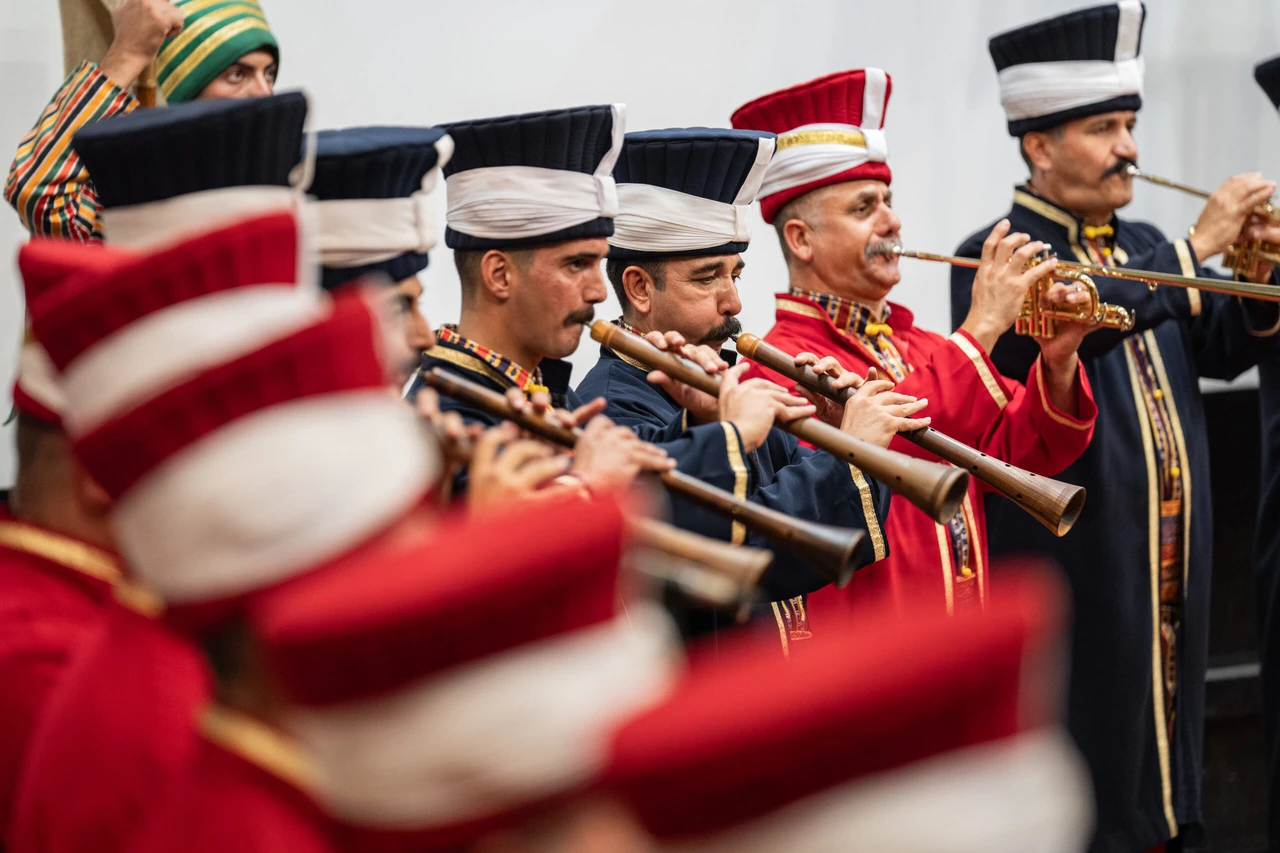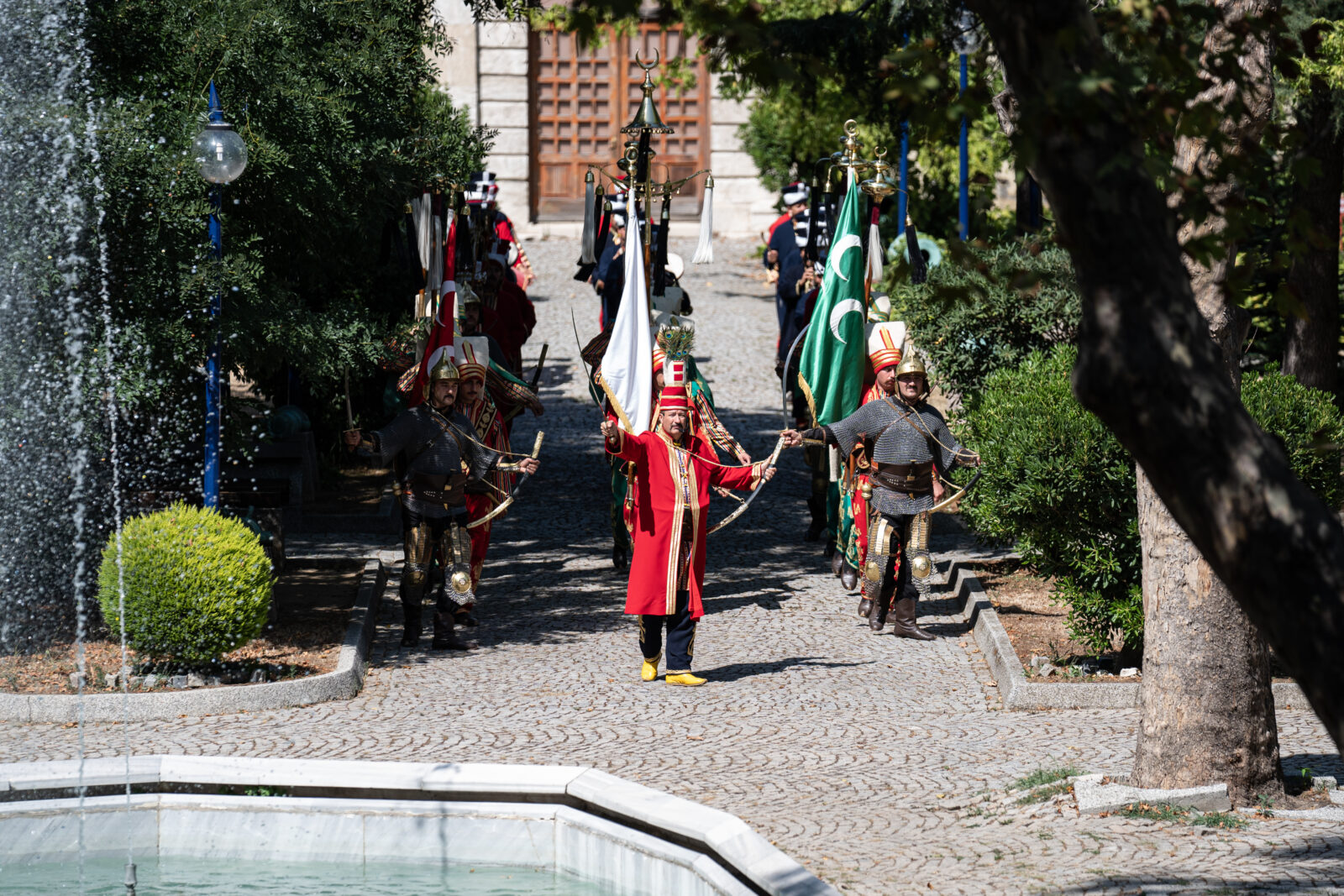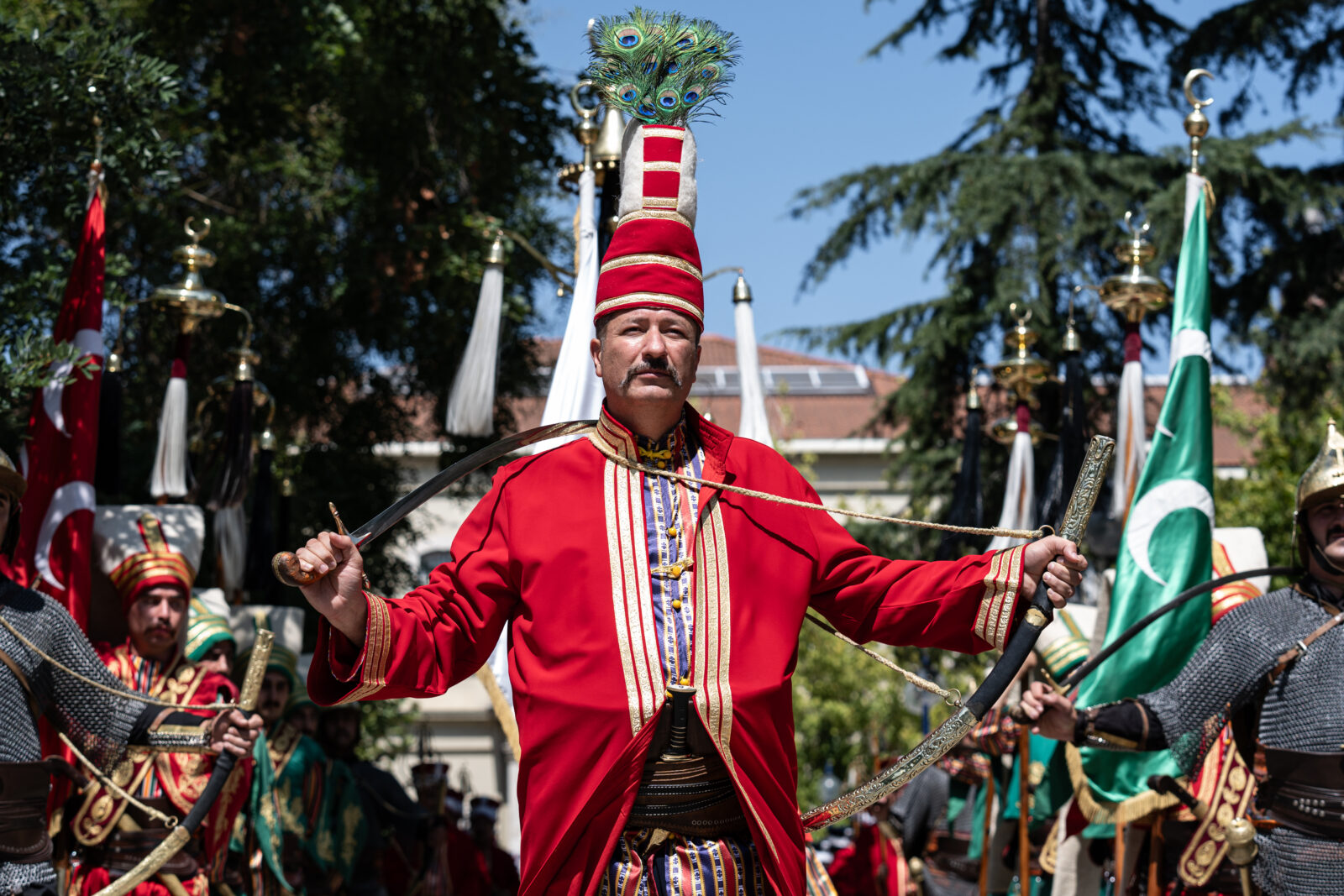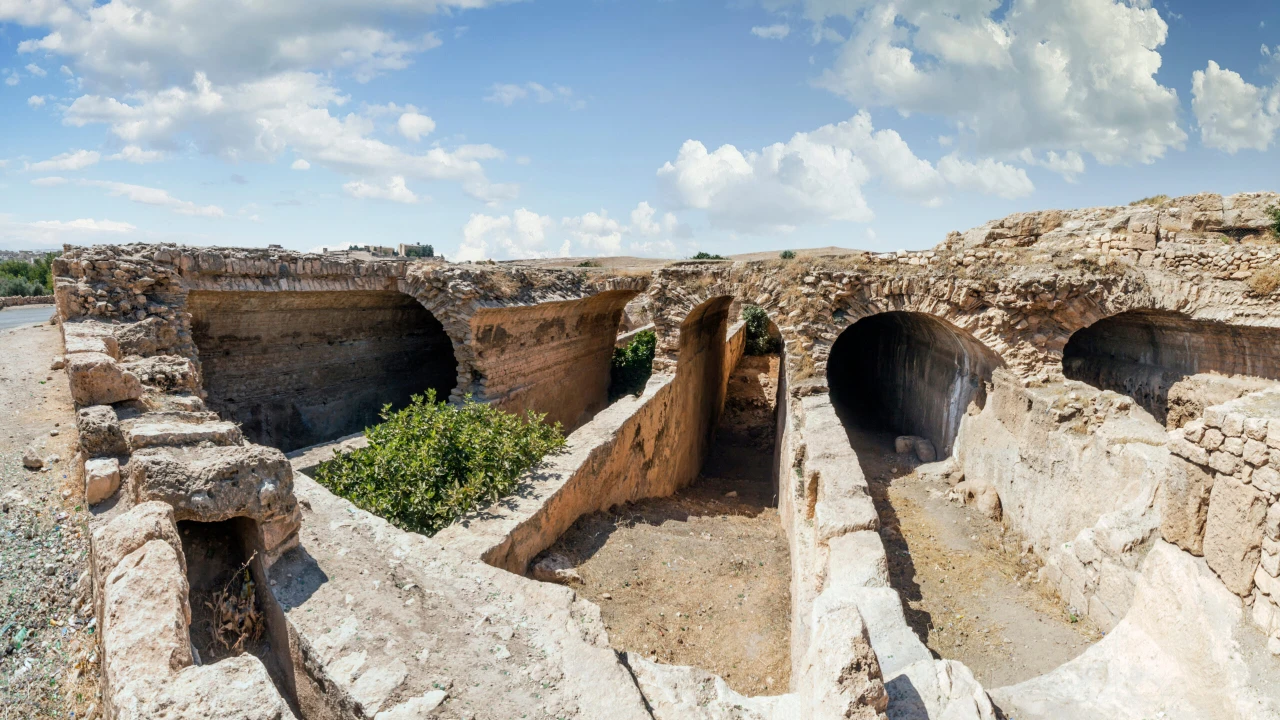Türkiye’s Mehter Unit preserves authentic spirit of Ottoman military music
 Mehter Unit Command, operating under the Department of Culture and Arts of the General Directorate of Administrative Services affiliated with the Ministry of National Defense, continues to preserve the mehter culture in its original form. September 17, 2024 (AA Photo)
Mehter Unit Command, operating under the Department of Culture and Arts of the General Directorate of Administrative Services affiliated with the Ministry of National Defense, continues to preserve the mehter culture in its original form. September 17, 2024 (AA Photo)
The Mehter Unit, operating under the Ministry of National Defense’s Directorate of Culture and Arts, continues to keep the centuries-old Mehter tradition alive, maintaining its original authenticity.
As one of the oldest military bands globally, the Mehter, which exemplifies Turkish heroism and the country’s understanding of sovereignty, remains a living symbol of the nation’s rich cultural heritage. According to historical accounts, the roots of Mehter can be traced back to 1,289 when Seljuk Sultan Giyaseddin Mesut II sent a drum, flag, and military instruments to Osman Gazi, the founder of the Ottoman Empire, as a mark of his authority. However, even earlier references to Turkish military music appear in inscriptions from the Orkhon and Gokturk eras, where terms like drums, flags, and military instruments are noted.

The Mehter not only uplifted the spirits of soldiers during battle, strengthening their sense of duty and patriotism but also instilled fear in the enemy with its powerful performances. Beyond the battlefield, the Mehter’s music played a vital role in Turkish musical traditions, performing both in the palace and for the public.
Although it was disbanded in 1826 along with the Janissary Corps, the Mehter was revived in 1914 thanks to the efforts of historian Celal Esat Arseven and Military Museum Director Ahmet Muhtar Pasha. Despite briefly being reinstated in the military during World War I by Minister of War Enver Pasha, it was dissolved again in 1935 for not being historically accurate. The Mehter as it exists today was reestablished in 1953, representing the style of the 18th-century Ottoman period.

Symbolism and structure of Mehter Unit
The Mehter Unit is composed entirely of Turkish Armed Forces personnel, including musicians and a unique “Tugh Team.” The unit’s commander is referred to as “Emir-i Alem,” overseeing both the musicians and the Tugh Team.
Three flags are prominently featured in the Mehter Unit: the red flag represents the state, the green flag symbolizes Islam, and the white flag stands for independence.

The ceremonial tugs (standards), which are about 2.5 meters tall, are adorned with horsehair tassels on both sides.
The conductor of the Mehter is known as the “Mehterbasi,” while the musicians are divided into seven groups: zurna, trumpet, nakkare (small drums), cymbals, davul (drum), and kos (large drum). The grandeur of the Mehter is determined by its “kat” (layer), with one “kat” consisting of a musician from each group. Performances are arranged in a crescent shape to honor the Turkish flag, with the kos at the center representing the star.

A global icon of the Ottomans
The Mehter Unit, which represents Ottoman military music of the 18th century, continues to echo the voice of the Turkish nation across continents. It performs six days a week at its base in the Harbiye Military Museum in Istanbul and regularly holds concerts both domestically and internationally under the Ministry of National Defense’s Directorate of Culture and Arts.
This enduring symbol of Turkish cultural heritage and military prowess remains an inspiring connection to Türkiye’s rich past, blending tradition with modern performance.



